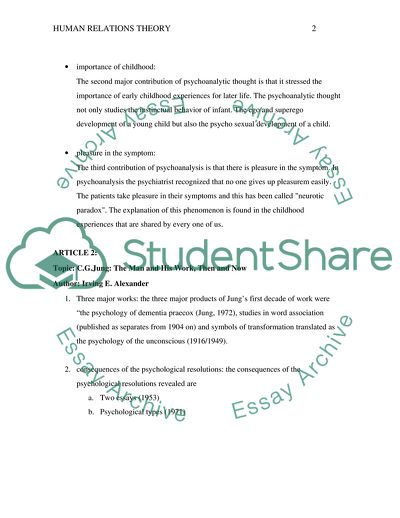Human Relations Theory Assignment Example | Topics and Well Written Essays - 2750 words. https://studentshare.org/psychology/1775861-human-relations-theory
Human Relations Theory Assignment Example | Topics and Well Written Essays - 2750 Words. https://studentshare.org/psychology/1775861-human-relations-theory.


